An assessment of the 1856-2012 drought frequency/intensity along the US West Coast leaves no role for human activity in hydroclimate.
Across the globe, no clear precipitation trends have been observed in the last several decades (Nguyen et al., 2018)
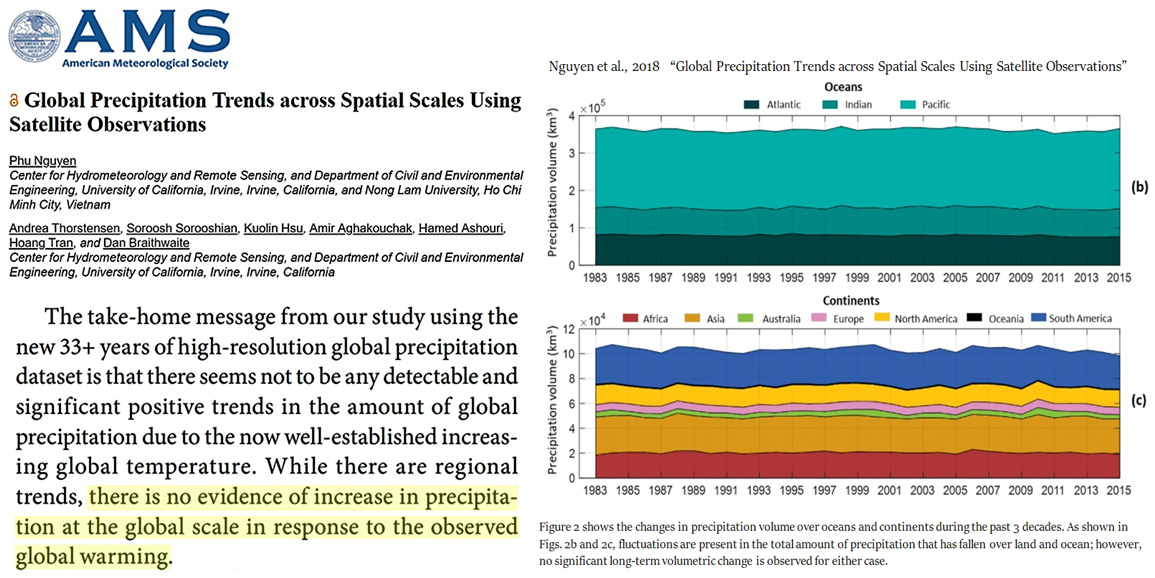
Image Source: Nguyen et al., 2018
Instead of an intensification of the hydrological cycle projected by climate models (i.e., more droughts, floods, and extreme rainfall events), satellite data suggest extreme precipitation has actually de-intensified globally (Koutsoyiannis, 2020).
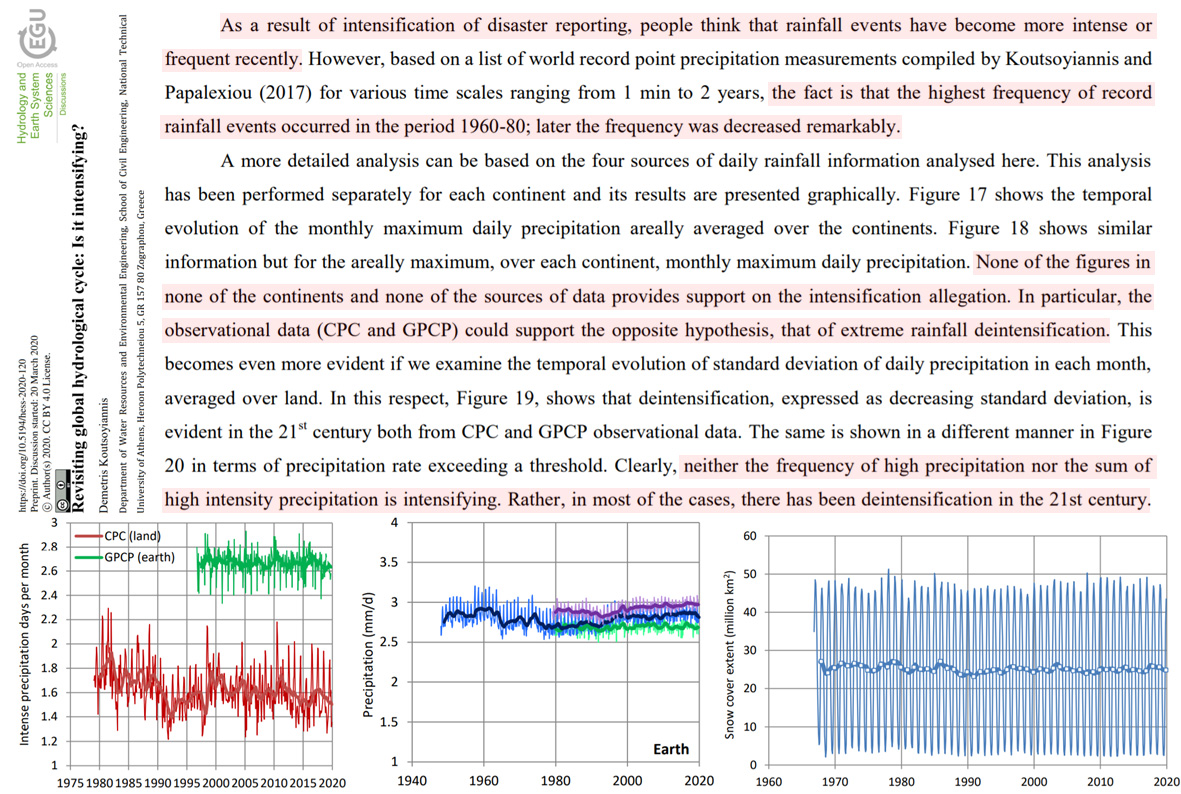
Image Source: Koutsoyiannis, 2020
It should therefore not be surprising that a new study of precipitation patterns along the Western coast of the United States finds random internal variability dominates (84%) as the driver of large-scale droughts for this region (Baek et al., 2021).
If there is any role for surface temperature changes contributing to the worsening of droughts, it’s opposite the global warming narrative; 16% of pan-coastal drought is attributed to cooling ocean waters (Baek et al., 2019 and Baek et al., 2021).
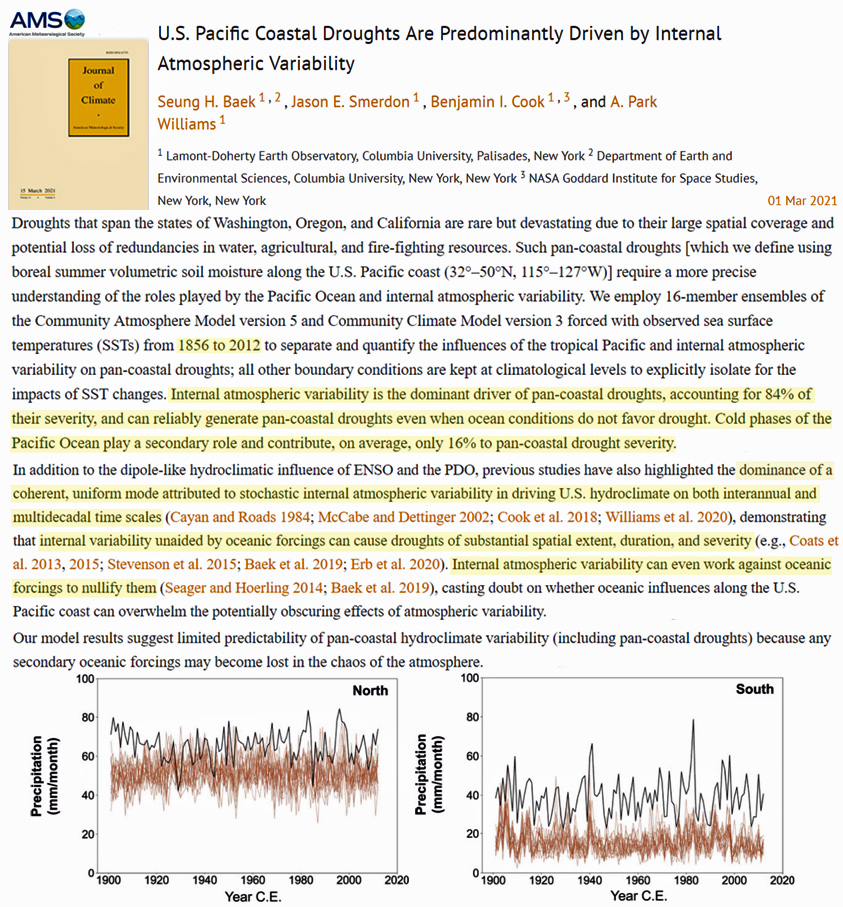
Image Source: Baek et al., 2021
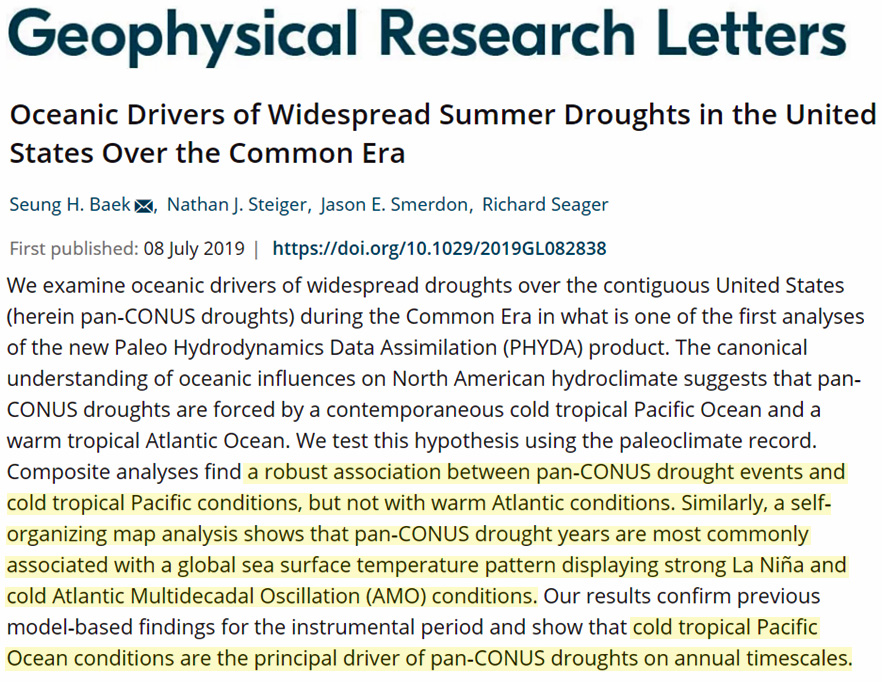
Image Source: Baek et al., 2019
Drought frequency across the continental United States has been on a declining trend since 1901 (McCabe et al., 2017).
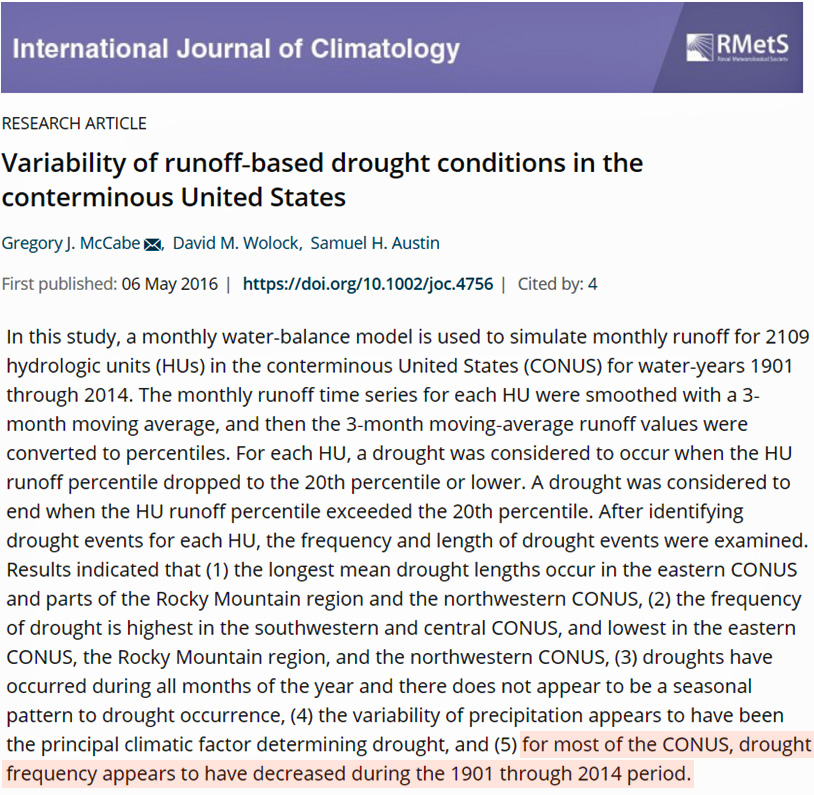
Image Source: McCabe et al., 2017
And if we consider the Northern Hemisphere as a whole, droughts “were more severe, extensive, and prolonged over Northern Hemisphere land areas before the 20th century” (Cook et al., 2015). Put another way, megadroughts have become far less common ever since the dramatic uptick in fossil fuel burning began in the 20th century.
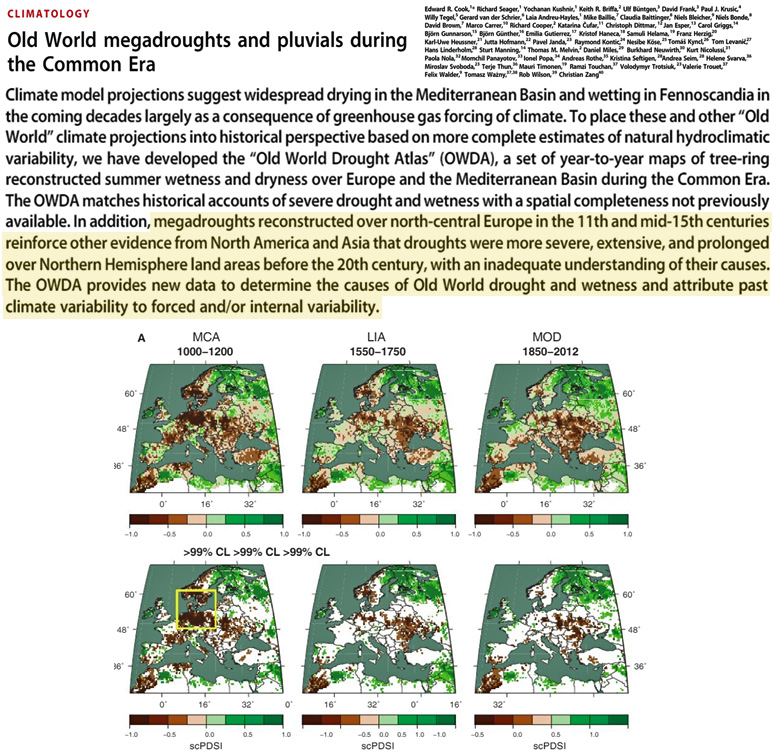
Image Source: Cook et al., 2015
via NoTricksZone
March 1, 2021 at 11:36AM
